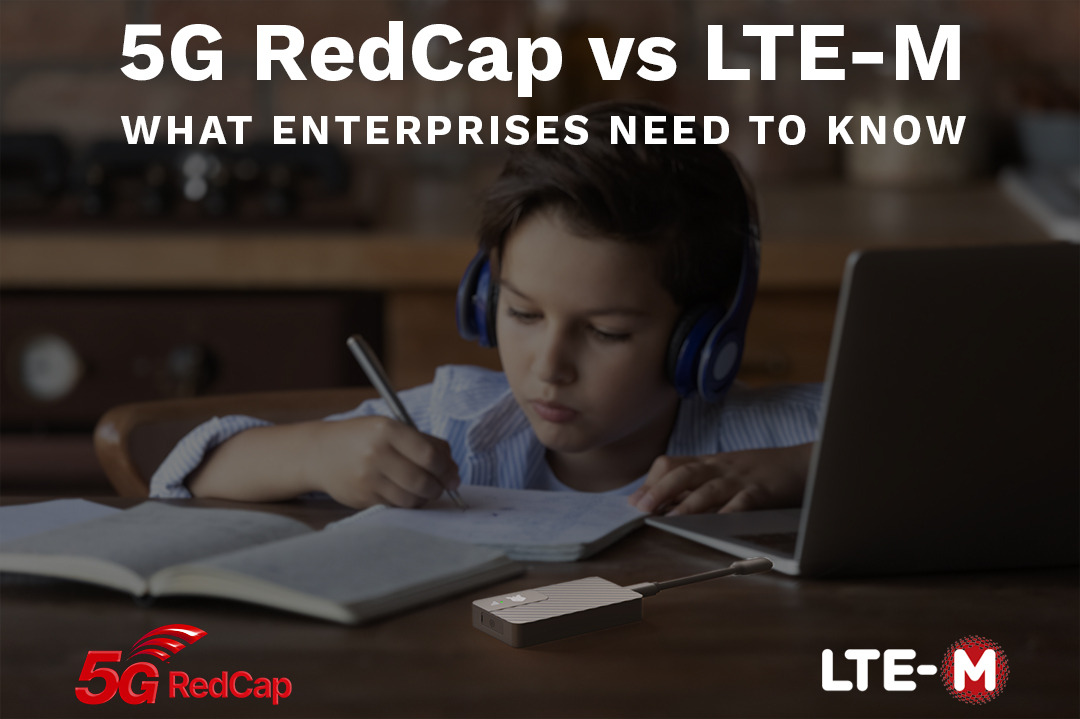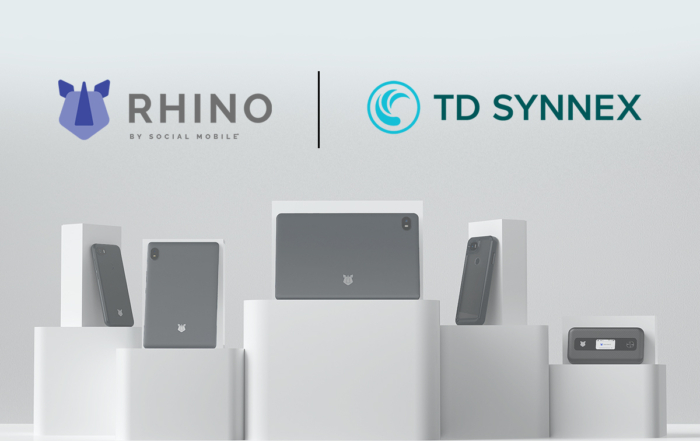5G RedCap vs LTE-M: What Enterprises Need to Know

Choosing the right network technology determines whether organizations accelerate innovation or fall behind. As organizations increasingly deploy IoT devices, embedded systems, and connected endpoints in mission-critical environments, the demands on wireless networks are evolving beyond what legacy standards like LTE-M can deliver.
Enter 5G RedCap, this emerging technology is poised to bridge the gap between high-performance 5G and low-power IoT, delivering a next-generation connectivity solution optimized for enterprise mobility and IoT applications. But how does it compare to LTE-M, a standard many enterprises have relied on for years?
In this blog post, we’ll break down the differences, use cases, and long-term implications of 5G RedCap vs. LTE-M and explain why RedCap is becoming the connectivity of choice for enterprises ready to future-proof their operations.
What Is LTE-M?
LTE-M (Long Term Evolution for Machines), also known as Cat-M1, is a cellular IoT technology developed under the 4G LTE umbrella. It’s widely used for low-power, wide-area (LPWA) applications that require moderate data rates and mobility, such as asset tracking, smart meters, and wearables.
LTE-M Highlights:
- Operates within the 4G LTE network
- Optimized for low power consumption
- Supports voice (VoLTE) and mobility
- Data rates up to ~1 Mbps
- Strong penetration in buildings and underground
While LTE-M has served enterprises well, its future is increasingly uncertain. With carriers reallocating spectrum toward 5G and planning sunsetting timelines for 4G networks, enterprises face a critical decision: continue investing in aging LTE infrastructure or begin the transition to a more future-proof solution?
What is 5G RedCap?
5G RedCap—short for Reduced Capability—was standardized in 3GPP Release 17 and is designed specifically to address the mid-tier use cases that sit between ultra-high-performance 5G and ultra-low-power LPWA technologies like NB-IoT. It offers a “right-sized” version of 5G that delivers sufficient bandwidth and low latency without the cost and power demands of full-scale 5G devices.
5G RedCap Highlights:
- Built on 5G Standalone (SA) architecture
- Data rates up to 85–150 Mbps
- Lower power consumption than traditional 5G
- Smaller form factor and fewer antennas
- Optimized for cost-sensitive applications
- Backward compatible with LTE and NR infrastructure
Unlike LTE-M, RedCap is built to scale with 5G networks, benefit from network slicing, and eventually support advanced enterprise use cases like smart factories, connected healthcare, and intelligent fleet management.
Why RedCap Is the Next Big Thing for Enterprises
The momentum behind RedCap is undeniable. As we covered in our previous article on 5G RedCap, leading U.S. carriers are already building out the infrastructure to support this powerful technology.
- T-Mobile USA launched its 5G RedCap network in late 2024. With a nationwide 5G Standalone (SA) network covering over 325 million people, T-Mobile meets the infrastructure requirement for any RedCap deployment.
- AT&T followed suit, recently announcing its RedCap network launch, calling it a “major milestone for the future of IoT and enterprise connectivity.” In their official blog post, AT&T emphasized RedCap as a “critical enabler for the next wave of IoT innovation” and specifically highlighted Rhino Mobility’s role in enabling that vision. AT&T also shared that their RedCap network now reaches 200 million points of presence (POPs) across the U.S., signaling their commitment to nationwide enterprise-grade 5G connectivity.
At Social Mobile, we’re proud that Rhino Mobility is supporting both T-Mobile and AT&T’s RedCap initiatives. Our RedCap-ready devices, like the RHINO H1, RHINO D2, and the RHINO M3501 Module, are helping enterprises take full advantage of RedCap’s streamlined, low-cost connectivity model.
RedCap Networks
As interest in 5G RedCap surges, global carriers are quickly moving from experimentation to deployment. According to the April 2025 GSA report, 30 operators across 21 countries and territories are now actively investing in RedCap. Early commercial launches have already taken place, including deployments by T-Mobile and AT&T in the US, China’s major carriers, stc in Kuwait, and Dito in the Philippines. These numbers make it clear: RedCap is no longer a future roadmap item; it is a present-day reality backed by strong global momentum.
This accelerated adoption is driven by RedCap’s unique value proposition for enterprises: the ability to support high-density, low-latency, and energy-efficient devices at scale without the complexity and cost of full 5G enhanced mobile broadband (eMBB). As more carriers roll out 5G standalone (SA) infrastructure, RedCap is rapidly becoming the connectivity standard of choice for mid-tier IoT and enterprise mobility use cases.
RedCap vs LTE-M: A Side-by-Side Comparison

Ideal Use Cases for RedCap in the Enterprise
As RedCap rolls out across carrier networks, its value proposition for enterprise customers becomes increasingly clear:
- Healthcare: Remote patient monitoring, diagnostic wearables, PERS devices, and mobile medical asset tracking.
- IoT & Logistics: Drone delivery systems, high-value asset trackers, cold chain monitors, surveillance cameras, and logistics sensors.
- Industrial: Autonomous robots, machine condition monitoring, predictive maintenance systems, smart grid infrastructure.
- Automotive: Telematics control units (TCUs), vehicle diagnostics, V2I (vehicle-to-infrastructure) communications, and EV charging station monitors.
- Consumer: Advanced smartwatches, kids’ trackers, mobile gaming devices, and wellness wearables.
When Should Enterprises Migrate from LTE-M to RedCap?
Now is the time to plan your migration strategy. While LTE-M is still in operation, the industry trend is clear: 5G is the future, and RedCap is the technology enabling that future for constrained devices.
If you’re deploying LTE-based solutions in 2025 and beyond, you risk locking into a legacy LTE-M path that may limit device support, network access, and long-term scalability. Carriers are incentivizing RedCap adoption, and OEMs like Rhino Mobility are delivering ready-to-deploy RedCap devices built specifically for enterprise use.
Let’s Build the Future Together
Ready to make the move to 5G RedCap? Whether you’re updating legacy LTE-M deployments or building next-gen connected solutions, Social Mobile can help you every step of the way.
Contact our team today to explore how RedCap-ready devices can transform your enterprise connectivity strategy.
Latest Articles
GET A QUOTE.
Let’s start designing your custom enterprise mobility solution.





